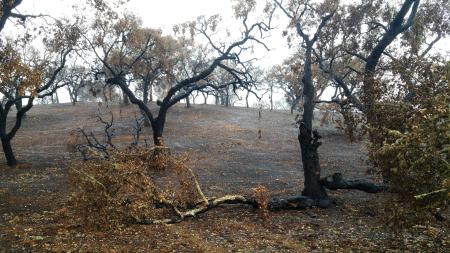
Objective:
Cork oak ecosystems have been experiencing a serious decline in the last decades attributed to different causes, including wildfires. After fire trees may become particularly vulnerable to forest pests, which may further affect the vigor of surviving trees and give rise to massive dispersing offspring affecting surrounding areas, but this was rarely assessed in Mediterranean oak ecosystems. Thus, the objective of this study was to assess the presence and dynamics of xylophagous insects on cork oak forests following fire in central Portugal.
Context:
Cork oak ecosystems have great socio-economic and ecological importance in the Mediterranean Basin, but they have been increasingly affected by several factors, including wildfires. Wildfire impacts on cork oaks are highly variable, depending largely on cork thickness, but both surviving and dead burned trees may be attacked and colonized by wood boring insects (Coleoptera). Ambrosia beetles, which have symbiotic interaction with fungi, are a particular concern because they have been reported to attack apparently healthy trees and may constitute a threat to neighboring forest stands.
Contacts:
Filipe X. Catry, fcatry@isa.ulisboa.pt
Manuela Branco, mrbranco@isa.ulisboa.pt
Further information:
Catry FX, Branco M, Sousa E, Caetano J, Naves P, Nóbrega F (2017). Presence and dynamics of ambrosia beetles and other xylophagous insects in a Mediterranean cork oak forest following fire. Forest Ecology and Management 404, 45–54. http://dx.doi.org/10.1016/j.foreco.2017.08.029